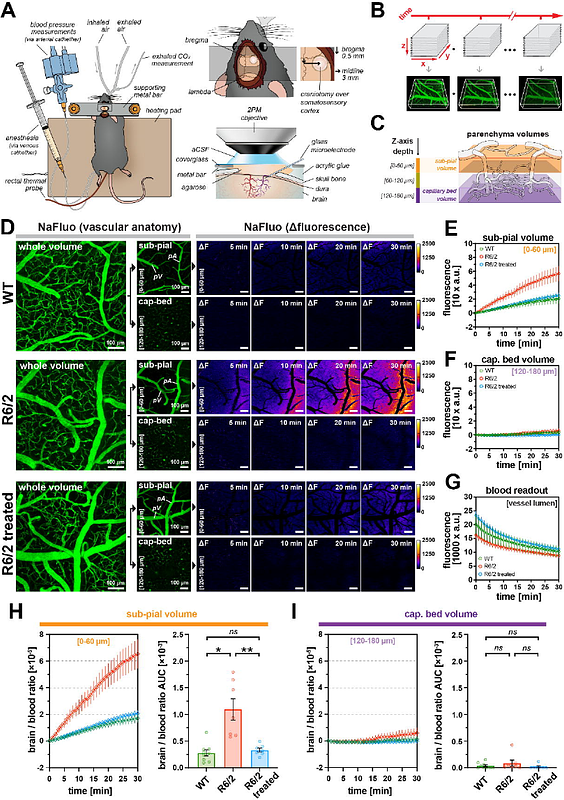Vascular dysfunction in Huntington's disease is located at the blood-CSF barrier and is rescued by sphingosine-1-phosphate receptor agonist

Vascular dysfunction in Huntington's disease is located at the blood-CSF barrier and is rescued by sphingosine-1-phosphate receptor agonist
Kucharz, K.; Soylu-Kucharz, R.; Saint-Pierre, M.; Alpaugh, M.; Qvist, F.; Bjorkqvist, M.; Skotte, N. H.; Cicchetti, F.; Lauritzen, M. J.
AbstractBrain vascular barriers are dysfunctional in many neurological disorders, including Huntington\'s disease (HD), but which vessels are affected and how remains unclear. Using in vivo two-photon microscopy in R6/2 HD-model mice, we reveal a striking divergence in barrier dysfunction. Surface vessels of the blood-cerebrospinal fluid barrier (BCSFB) drive pathology by paracellular leakage, while parenchymal vessels of the blood-brain barrier (BBB) exhibit increased transport via adsorptive-mediated transcytosis (AMT), with arterioles being the most susceptible segment. The pathology of both barriers coincided with astrocyte activation localized to affected vessels in R6/2 mice, as well as post-mortem HD human brains. Sphingosine-1-phosphate receptor 1 (S1PR1) agonist treatment rescued BCSFB leakage but only partially restored BBB function, selectively reducing AMT in arterioles, with no effect in capillaries and venules. These findings redefine HD vascular pathology, demonstrating heterogeneous, vessel-type-specific barrier failure beyond generalized \"disruption,\" uncovering mechanistic vulnerabilities and the therapeutic potential of S1PR1 modulation.